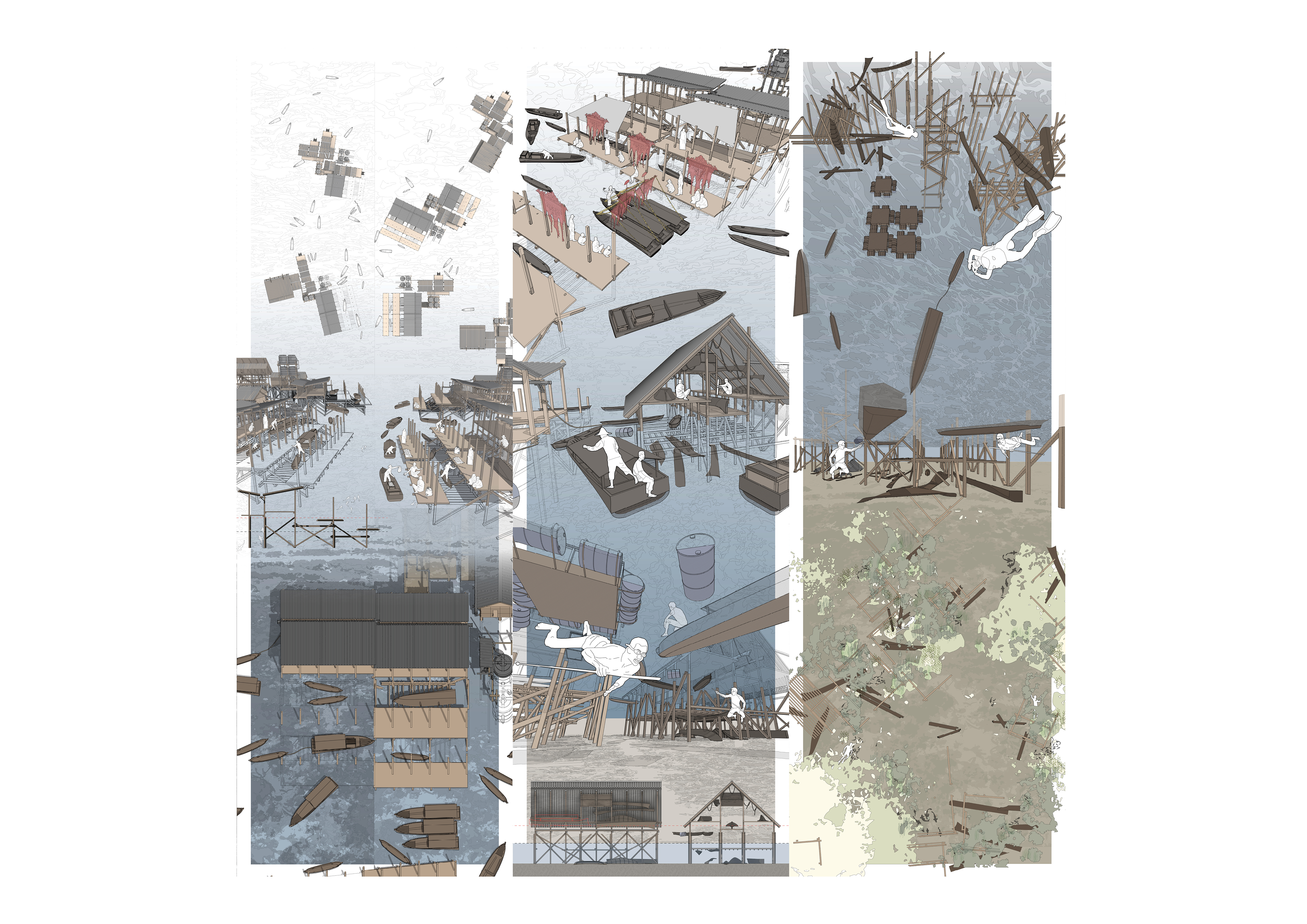In Search of Alternate Time
Negotiating Nomadism and Sedentarism
Location: Semporna, Sabah, Malaysia
Project Type: Master’s Graduate Thesis
Date: August 2023 - May 2024
Supervisor: Assoc Professor Tsuto Sakamoto
I have always been fascinated by the life of buildings. Not human's inhabitation in them, ecology, or any other living thing but the building itself. A building’s relationship with time is often labeled as an antagonistic one, a battle of endurance of sorts. We do not often think of how it will endure the passage of time much less render concern for its mortality. Perhaps a by-product of operating under the mechanics of a sedentary world, whose concepts of time are anchored in a linear model. Thus beckons, how could a different conception of time change the way we conceive and construct architecture?
To develop an architecture that addresses a different form of time I looked towards the cyclical model, evident in the nomadic lifestyle. More specifically the Bajau Laut, a group of sea nomads. A group that has been constantly disenfranchised by the formation of the sedentary state. Their livelihoods were encroached upon and by virtue of a nomadic lifestyle never gained citizenship. Statelessness is common amongst these communities, plaguing them as they seek new opportunities on land. The thesis speculates on an architecture that is formulated with the Bajau Laut’s sense of time, a negotiation between their nomadism and the sedentary state.
The first act of the thesis was decolonising mapping, trying to understand the coast and the sea in its multiple states in contrast to its homogeneity in cartographic maps. From the series of drawings and models, a distinct relationship with the coast emerged, anchored around clear water. The design centres around first cleaning the water on the coast, an act that goes beyond sanitation into reclaiming their complex relationship with the ocean. As the water gets cleaned the architecture begins to submerge into the ocean, now operating distinctly on the sea nomad’s sense of time. Lastly, by acknowledging architecture’s mortality the design moves beyond its systems and investigates the value of architectural death as a landscape.











